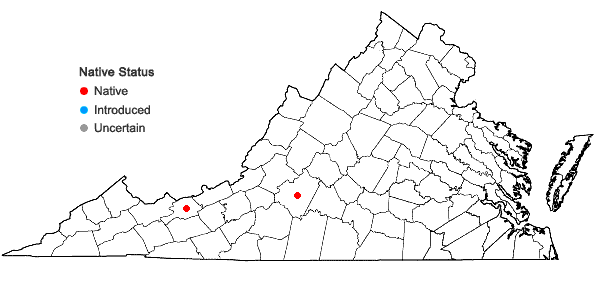Spiranthes arcisepala M.C. Pace

Detail
- Family
- Orchidaceae
- Botanical Name
- Spiranthes arcisepala M.C. Pace
- Common Name
- Synonym(s)
- Flora of Virginia Name/Status
- Spiranthes arcisepala M.C. Pace
- Comments
- This recently described, cryptic species is among several published as the result of extensive recent work on the Spiranthes cernua complex by Pace and Cameron (in Systematic Botany 42(4): 1-30 (2017)). Spiranthes arcisepala is most similar to S. cernua but can be differentiated from the latter by its smaller, squatter flowers and (usually) downwardly falcate lateral sepals. Quantifiable differentiating characteristics between the two are obscure, so identification can be problematic, especially in pressed specimens. While S. cernua has pristine, pure white flowers, S. arcisepala can range from white to slightly off-white, and often has a faint yellow patch towards the base of the lip. Both S. cernua and S. arcisepala inhabit wet, seepy areas, and may actually co-occur in places, but S. arcisepala appears to be restricted to the Appalachians in our region while S. cernua is widespread. Spiranthes ochrolueca, another closely related species found in the mountains, has conspicuous yellowish coloration on the upper surface of the base of the lip, upward-pointed and sharp-tipped lateral sepals, and is generally found in dry, ericaceous sites at higher elevations.
The Virginia range map is currently skeletal, with critical reevalution of Spiranthes cernua (s.l.) needed both in the field and herbarium.
- Habitat
- Bogs, seeps, and seepage swamps. Two collections are cited by Pace and Matthews (2017): Bedford County, Peaks of Otter, 6 Sept. 1947, Freer 1907 (AMES); and Bland County, Kimberling Creek, 3 Oct. 1983, Wieboldt 4922 (CM). An unvouchered Giles County population has also been identified by Pace through photographs. This taxon is likely to be more widespread in the mountain counties of Virginia.
- Native Status
- Native
To save this map, right-click (control-click for Mac users) on the map and choose "Save Image As...".


